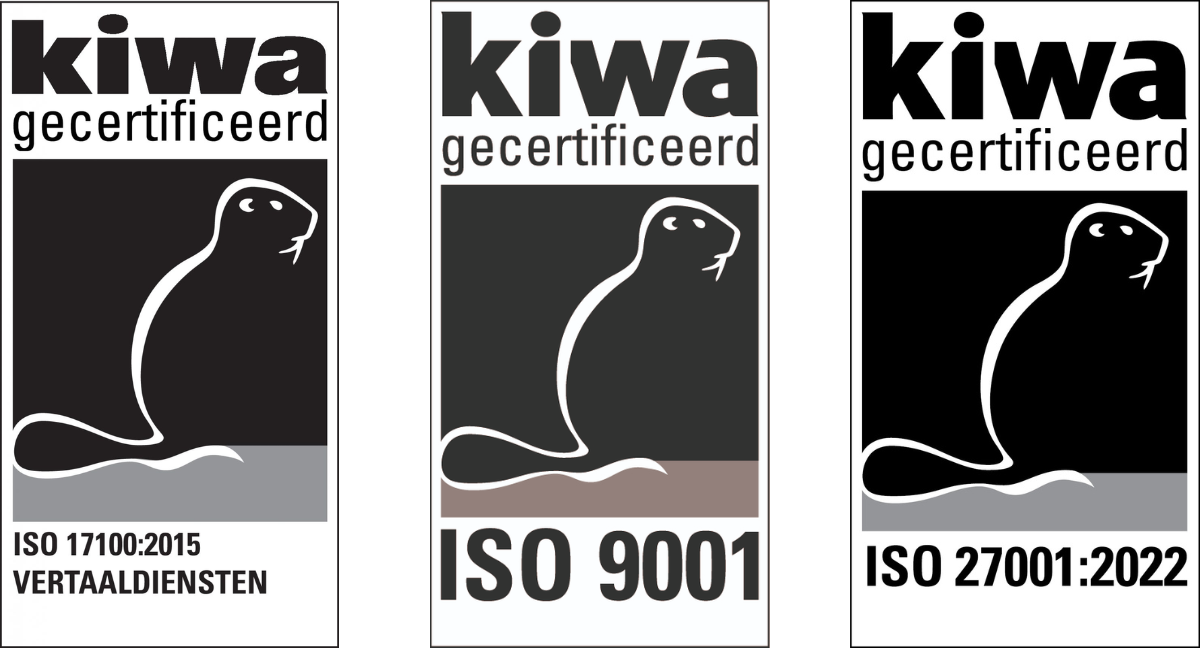Blog
- Information directly from the translation industry
- Advice from experts
The source of the next paragraph is a simple English text that we have translated into French using a well-known translation engine. We then translated it back into English using the same translation software:
With the recent launch of ChatGPT and other AI applications, the attention on machine translation is also increasing. Well Named! Technology is relevant and offers new opportunities for the world of translation
That’s right: these sentences don’t quite sound right!
In the original first sentence we intended to clarify that the interest in machine translation is increasing, rather than observing a shift in attention, as our dear deep learning friend seems to prefer.
How the original next sentence “And rightly so!” turned into “Well named”, remains a mystery to us as well. We admit: the sentence expresses a bit of emotion, but that, in the end, is the writer’s prerogative.
In the final sentence, it is nice to read that technology in general is relevant. We of course wholeheartedly agree. However, the source refers to the technology of machine translations, and not to technology in general.
These examples indicate that, unlike this well-known translation engine, the neurons in our human brains can effortlessly apply the nuances, the emphasis of the subject and the context, correctly.
What is the added value of machine translations?
All that being said, we are not about to claim that machine translation doesn’t add value. On the contrary. The quality of machine translation (also known as MT) has improved over the past five years. Especially thanks to the application of deep learning, where such systems are trained to mimic the human brain.
The professional application of MT has also been further improved. Companies compile glossaries so that specific terminology can be inserted into text automatically, consistently and accurately without human intervention.
Companies also integrate their translation memories into the standard translation applications that human translators use to process translations. This allows translators to focus on checking and adjusting MT output rather than doing the entire translation from scratch themselves. The MT then takes care of the simpler work – the parts that are translated the same way every time – while the translator’s intellect can focus on linguistic specialism and knowledge of the subject.
Deploying machine translation and AI tools in the simple steps of the translation process.
Translation Kings therefore embraces developments in MT and AI. It helps its translators focus on the intellectually satisfying part of translation and leaves the simpler repetitive work to MT. Of course, this also benefits the efficiency and therefore the cost of a translation. And that, in turn, benefits the customer!
Apply AI and MT to more complex translations such as marketing, technical, medical or legal translations.
The example we started this blog with illustrates how things can go wrong even with a simple piece of text. In this particular example, the negative consequences of this MT translation are obviously not crucial and can even be considered ‘good enough’ in some cases.
But when MT makes such mistakes in technical, medical, legal and marketing expressions, it’s a different story. Where context, specialism, exact wording, use of nuance, humour, culture and the differences between literal and figurative are of great importance for the meaning of the message, there is no room for error. It can appear unprofessional to the reader and sometimes even have disastrous consequences.
MT and AI continue to evolve
Fortunately, MT continues to learn, with AI analysing a mass of text data, looking for certain patterns and learning which translations were appropriate in similar cases. The recent adoption of DNN (Digital Neuron Networks) is also a step forward. We’ll leave the significance of that for a future blog, but it boils down to mimicking the workings of human brain neurons, connecting neurons in software and making the connections stronger or weaker as one learns. In other words: the learning process becomes more human-like. That is the ultimate goal, at least.
With that, machine translation has moved from the ‘occasionally useful’ category to the ‘sometimes reasonable’ category over the past five years. What needs to happen to grow from ‘sometimes reasonable’ to ‘reasonable’ and eventually ‘reliable’ is unclear for now.
In the meantime, human intervention in the translation process remains crucial, and Translation Kings embraces the proven capabilities offered by MT. Our goal is and remains an efficient translation process, which fully unburdens you and always provides you with an inexpensive and high-quality translation.
We apply whatever is necessary to continue to fulfil that promise.

Translation Agency complies with the highest attainable certifications: ISO 9001:2015, ISO 17100:2015, and ISO 27001:2022. Top quality, security and service remain our number one priority.


Translation Agency is a member of the VViN and EUATC; Organisations of translation agencies that work together to optimise quality and service.
